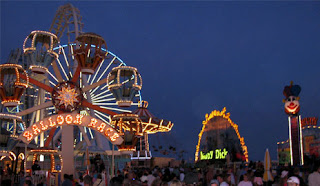Basto Village

If you dare to venture far enough into the Pine Barrens you will come across a jewel from history. A village that seems practically untouched since the day it was built. It's rich history and wonderful landscapes provide eye candy for all. A lake, river, and rich forest surround the village, bringing to life the richness that once was. It's a diamond in the rough waiting to be explored. A quick little history lesson:
A quick little history lesson:
Located in Wharton State Forest in the south central part of the Pine Barrens, you will find one of New Jersey's most historic villages, Basto Village. It was founded in 1766 by Charles Reed who built Basto Village Iron Works along the river. He mined the bog ore found all around and used the forest for charcoal from the surrounding area to smelt the ore. By 1773, John Cox bought the place and manufactured plenty of supplies for the Continental Army during the American Revolutionary War. In 1779, the manager, Joe Ball, bought the works and his uncle would buy controlling interest in 1784. William Richards was the man, and it would stay in the family for 92 years. During this time much of the village you see now was erected. By the mid-1800s demand for iron from Basto slowed and they turned to glass making, without much success. This didn't last long and it soon went bankrupt. In 1876, a well-known man by the name of Joseph Wharton purchased the village along with numerous other places in the area. He improved many of the buildings in the village after the purchase. When he passed away it was handed over to the Girard Trust Company in Philadelphia. By 1950, the state of NJ took control and started to develop in the area, letting few people remain in the houses that existed. By 1989, the last owners vacated their houses and log cabins that stand there now.
As of now, there are more than forty sites and structures in the village. It consists of a wonderful mansion that housed the owners, a sawmill, a charcoal kiln, ice and milk houses, a carriage house and stable, a blacksmith and wheelwright shop, a gristmill and a general store. There is even a Post Office along with Methodist Episcopal Church that are still in operation. Even though more than 200 years of history have passed over Basto, it's still in pristine condition and a wonderful attraction for tourist and those looking for a little break from it all. There are numerous ways to enjoy yourself at Basto. The lake offers a great view along with other sorts of ways to occupy oneself. Visitors can go kayaking and canoing as well. Although I haven't had the pleasure to see the village during seasons other than fall, I will have to say there is no better time to visit the place. The foliage during autumn is breath taking accompanied by the colonial style buildings. There is a much better place to take in and enjoy during this time of year. Colors of fall give visitors that special kind of feeling as if you are visiting time itself.
Even though more than 200 years of history have passed over Basto, it's still in pristine condition and a wonderful attraction for tourist and those looking for a little break from it all. There are numerous ways to enjoy yourself at Basto. The lake offers a great view along with other sorts of ways to occupy oneself. Visitors can go kayaking and canoing as well. Although I haven't had the pleasure to see the village during seasons other than fall, I will have to say there is no better time to visit the place. The foliage during autumn is breath taking accompanied by the colonial style buildings. There is a much better place to take in and enjoy during this time of year. Colors of fall give visitors that special kind of feeling as if you are visiting time itself.
A glimpse into the past is a perfect reason to visit Basto but if there need be any more of a reason, there are wonderful landscapes, a certain richness that appeals to almost anyone who is interested in history, and stuff to do for all ages. Batso is a great park for all to enjoy. The bridges, old style feeling, waterfalls, rivers, lakes, trails, and tons of lost architecture are great to take in and enjoy. Antiquity and nature make this place twice and nice.



















